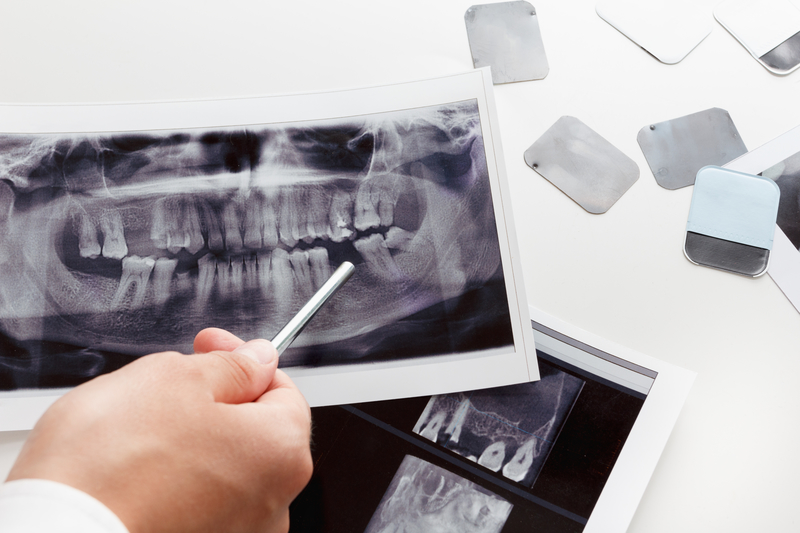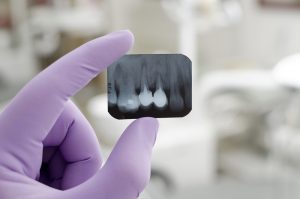Dental X-Rays: Are They Safe?
Choosing Toothbrushes and Toothpastes
May 8, 2018Getting Dental Work Done with Braces
May 22, 2018
If you have ever visited the dentist before, then you may be familiar with the different technology a dental office uses. Dental x-rays are often used on patients to detect cavities as well as bite and alignment problems. What are dental x-rays and are they safe? Find out all you want to know about dental x-rays, tooth decay, and how both relate to your child’s dental treatment!
What Are X-Rays?
Colors are a form of light energy that the human eye can see. We see colors because our eyes can see certain waves of energy in the form of light. Light rays have different amounts of energy, which determines what color your eyes see. If your toothbrush is blue, it’s because it carries a certain amount of energy on a light wave that makes it blue.
There are other types of lightwaves out there that carry energy, only you can’t see them. You may have heard of infrared lights or x-rays. We will focus on x-rays, as they play a prominent role in dentistry. An x-ray is a type of lightwave that carries energy. You have probably come in contact with x-rays many times and not known it because it is invisible to the naked eye. However, they do exist and they can pass through objects. After the discovery of x-rays, they started being used in healthcare as a way to pass waves through your body to see bones, teeth and more. When you think of x-rays, you probably picture those black and white photographs dentists or doctors take of your body. Basically, we can pass x-rays (or energy waves) through your body and can get an internal picture of your teeth and more. It’s painless and a very quick way to see what the naked eye can’t.

What Is Tooth Decay?
To know more about why we are talking about x-rays, you will need to know more about tooth decay. You know this term by other names such as “cavities” or “dental caries”. Many times, patients don’t know they have cavities until they see a dentist. How does the dentist know you have a cavity if you haven’t seen or felt one in your mouth? The tricky part about cavities is that they form over time, and they’re painless until they start to grow large. Large cavities cause swelling, pain, toothaches and more. Small ones that are forming don’t usually cause those symptoms. However, you might feel some tooth sensitivity, especially with hot and cold foods and drinks.
When you eat, sugar in your foods and drinks mix with bacteria in your mouth. That mixture creates a sticky, clear substance that is called plaque. That substance sticks to your teeth and is actually acidic. So when it sits on your teeth, the acid starts to damage your tooth enamel, or the hard outer covering of your teeth. It will weaken the enamel and eventually can get inside your tooth to start rotting the inside. That rotting part of the tooth is what a cavity is. You can’t physically tell many times that you have a cavity just by looking at a tooth. These cavities generally happen inside the teeth, but a dentist won’t just open up all your teeth to look inside. They need another way to do it, and that is through using dental x-rays.
Why Does Dentistry Need Dental X-Rays?
If you or your little one has ever been to the dentist, then they have probably received dental x-rays. Do you know why or how often? Depending on the dentist, a patient will have dental x-rays once a year. Some dentists will do dental x-rays at every 6-month visit if a patient gets cavities often. Patients will sit in a dental chair and will then be covered by a special x-ray rubber covering to block radiation. X-rays don’t need to be passed through all of the body when we only need to see the teeth. A dental hygienist will set up a small x-ray bitewing by your teeth and then will use a machine to pass some x-rays through your teeth. This happens in less than a second. Then, we either develop the film, or we view the photographs on our computer.
Dental x-rays help us to look at the teeth on the inside. We can spot shadowed or darker areas in the inside of the teeth to detect cavities. Without dental x-rays, we wouldn’t have a good way to know if the inside of the tooth has a cavity or infection. We often use dental x-rays to look at the entire structure of your mouth and teeth to make sure your teeth and bite are aligned correctly. Some people worry that dental x-rays can hurt patients. X-rays carry high amounts of energy, so they should not be used often on the body or tissue damage can happen. However, receiving dental x-rays here and there for your dental visits will not give you enough x-rays to damage your body.

Dental X-Rays and Common Concerns
X-rays expose patients to radiation, which can damage the body’s tissues. However, the American College of Radiology reports that all the x-rays a patient would get only sends about .005 millisieverts of radiation to the body. That’s about what you get from being out in the sun just in one day. The amount of radiation dental x-rays give patients is so minimal, you don’t have to be concerned. However, we always protect patients by giving them proper coverings so that only the teeth area even gets radiation. For pregnant patients, we simply skip the dental x-rays until they aren’t pregnant just to be safe. When it comes to your child, dental x-rays are a great way to detect cavities before they become large and cause real damage. To learn more about dental x-rays and how we do them for your child, call Hardy Pediatric Dentistry & Orthodontics today at (720) 887-6003!